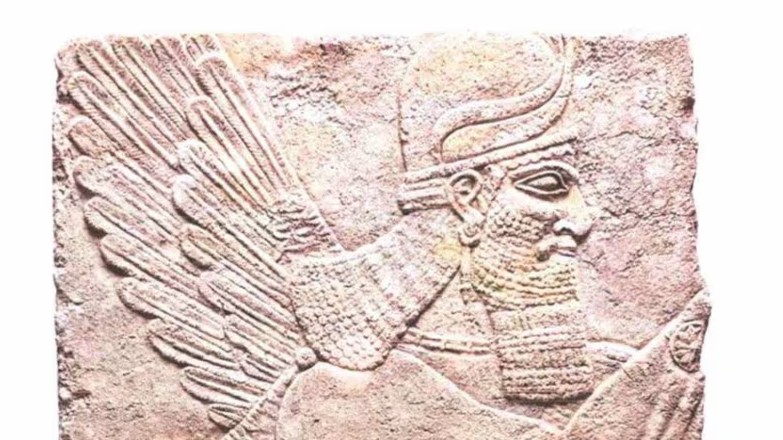The artefact was excavated from the site in the 1970s and is believed to have been taken in the 1990s after the First Gulf War…reports Asian Lite News
An ancient Assyrian artefact taken from a site considered to be a cradle of world civilisation has been returned to Iraq after spending more than two decades in a police storage unit in London.
The frieze, which weighs about 333kg and is 1.16 metres by 1.13 metres, depicts the upper portion of the carving of an Assyrian genie that originally adorned the walls of Northwest Palace at Nimrud in modern-day Iraq.
Carvings depicting the genie were popular in the reign of Assyrian King Ashurnasirpal II, who commissioned them to adorn the walls of his palace. The genie was considered to be a protective spirit that symbolised fertility.
The artefact was excavated from the site in the 1970s and is believed to have been taken in the 1990s after the First Gulf War. Its location was unknown for about a decade, until it turned up in an antiquities market in London in 2002, according to a BBC report from 2016. It was then locked in storage by officers in the Metropolitan Police’s Art and Antiques Unit because its legal owner was unknown.
The frieze, originally 2m tall, had been badly damaged, leaving only the head and body. However, it remained extremely valuable, with rumours that the remaining portion was for sale for about £3.5 million ($4.6 million).
A similar, but complete stone carving of a genie from the palace was sold in 2018 through Christie’s auction house in New York for $31 million, shattering a previous world record for Assyrian art. The buyer was anonymous.
The British Museum played a pivotal role in the return of the damaged stone carving to Iraq. Dr St John Simpson, a senior Middle East curator and archaeologist at the museum, told The Telegraph: “It’s the largest antiquity believed to have been repatriated to Iraq in the past 20 years and very important, as it has a perfect provenance.
“As a sculpture excavated by an Iraqi archaeologist at a capital of Assyria that was badly destroyed by Islamic State, it has added symbolic value.”
The recovered rare artefact at the Iraqi embassy in London
Discussions about its return took place over “several years”, according to the Iraqi embassy in London. Speaking at an event to mark the artefact’s return, Iraq’s ambassador to the UK, Mohammed Jaafar Al-Sadr, spoke about its historical significance, which increased after the destruction of the Nimrud Palace in Nineveh Province by ISIS. The ambassador urged “all individuals in possession of Iraqi artefacts to return them to their homeland”.
The Assyrians arose in about 2,500BC in northern Iraq and at one point ruled over a realm stretching from the Mediterranean to Iran. In July, Iraq announced it had recovered 181 artefacts that had been smuggled out of the country from Nimrud and taken to Los Angeles in the 1990s.
ALSO READ: UK grants 286,382 work visas, 432,225 student visas

